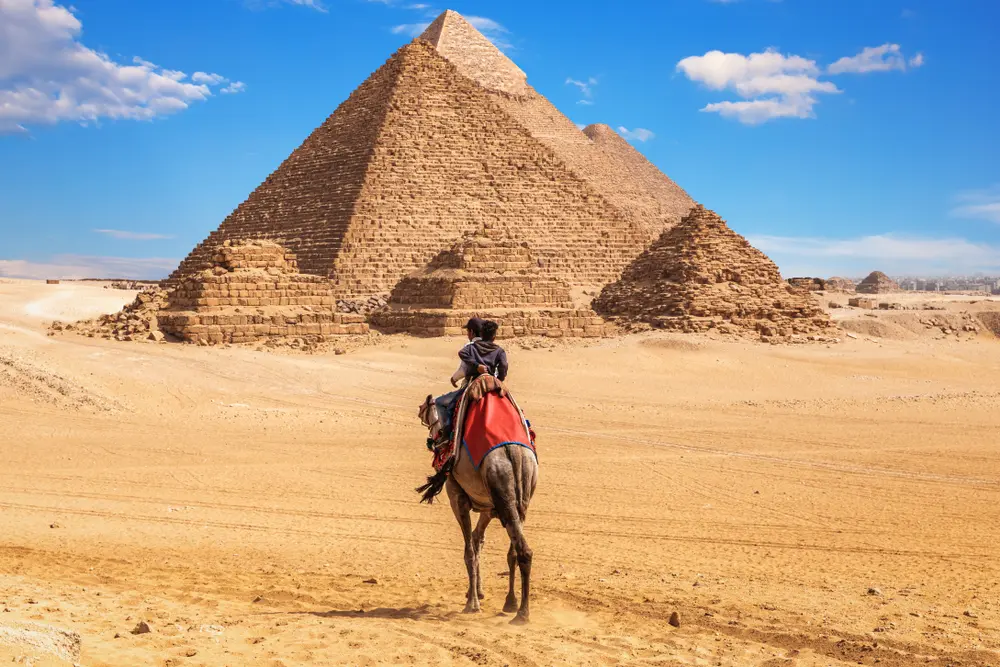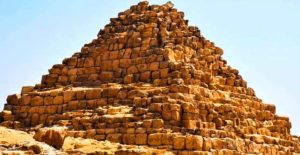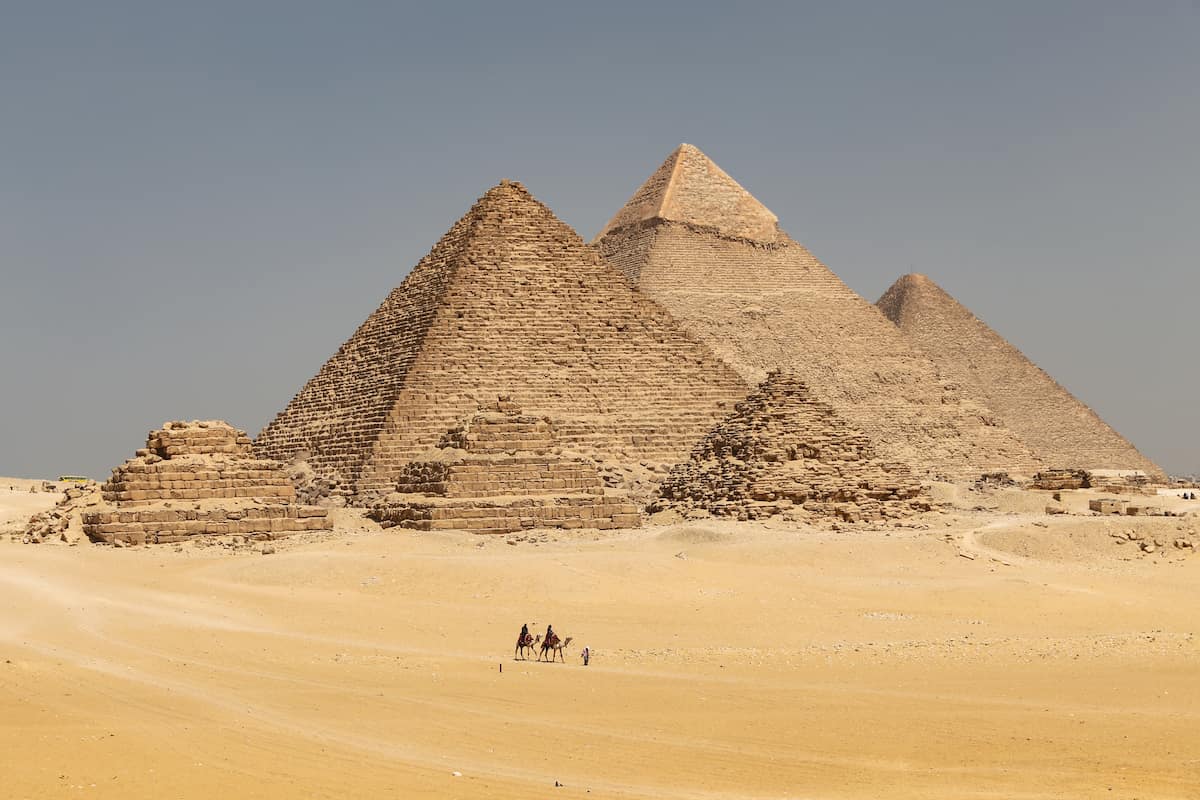The Six Queens Pyramids – Facts and Information
The Egyptian pyramids are the greatest achievements of the Pharaonic civilization. they still amaze scientists and visitors till now.
While everyone knows the three great pyramids of Giza (Khufu, Khafre, and Menkaure). There are hidden treasures which are six small pyramids or Queens’pyramids .
What are the six small pyramids?
These pyramids hold rich secrets and stories about ancient Egypt and the royal family of the fourth Dynasty. If you are looking for information about the Giza archeological site and it’s wonderful history , Let’s know about the history of them .
Are the six tiny pyramids exist next to the Great pyramid?
- They consists of six smaller, unknown pyramids located near from the Great Khufu.
- They are on the eastern and southern sides of the Great Khufu.
They are two groups:
- Three are in the east of the Khufu. They are for the Queens as they belong to king Khufu’s wives or close family members.
- Three are in the south of Menkaura. They are less prominent and may be symbolic tombs or part of a larger religious complex.

The Six Small Pyramids Next to the Great Pyramid
Queens’ Pyramids Near Khufu Great Pyramids
These three pyramids are the most prominent and each contains its own burial chamber. This reflects the importance of queens in ancient Egypt and their position in the royal court.
Queens Pyramids History and Facts :

Queen Hetepheres
Queen Hetepheres Pyramids
The first pyramidic construction, known as the Pyramid of Queen Hetepheres, she was the mother of King Khufu.
Since a tomb was found next to the pyramid containing the contents of Queen Hetepheres’ tomb, that pyramid was attributed to her. It’s a pyramid with a square base, each side measures 45 meters. The entrance to this pyramid is on the north side, and its height is approximately 6 meters.
Queen Meritetes Pyramids
The second pyramidal construction is the tomb of Queen Meritetes. It also has a square base of 45 meters, but it’s built in the style of a step pyramid. We can see three clear remaining steps of its construction.
Third Queen Pyramidal Construction
The third pyramidal construction, the southernmost one, isn’t much different from the previous one. It also has a stepped style, but it belongs to Hetepheres, King Khufu’s wife.
Another theory suggests that these structures are merely symbolic burial places for the royal “Ka,” or royal spirit. This theory, however, is considered weak It has no basis to stand on.
The other three may be tombs for nobles or part of the funerary rituals of King Khufu.
How The Six Small Ancient Tombs Built?
- The ancient Egyptians built them in the same architectural style as the Great Pyramids, but they are lower in height so their height ranges from 15 to 30 meters.
- They consist of burial chambers, passageways. Also sometimes small temples adjacent to them.
- Most of them have been damaged or stolen over the ages, but their ruins still exist.
Are The Six Tiny Pyramidal constructions Important?
Despite their small size, the six small pyramidal shapes have a great archaeological importance. As they provide a comprehensive picture of royal life during the era of the majestic tombs. Also, illustrate the position of women during that period . Queens had their own tombs near the greatest pharaohs.
All in all, The smallest construction pyramidic shape next to the great one of ( Khufu) are an integral part of the Giza area’s architecture. Also, represent the greatness of ancient Egyptians’ architectural thought, which focused not only on immortalizing kings but also queens and members of the royal family.
Secrets Behind the Queens’ Tombs
These constructions of sepulcher shapes are a different world of a fantastic style of building. In fact, it narrates so many stories about princesses in Ancient Egyptian times. Also, it’s royal tombs for the daughters and wives of the pharaoh.
Conclusion:
Finally, despite its small size, it remains as a genius of an immortal civilization. These giant stones provide a more comprehensive and detailed picture of the history of ancient Egypt. It’s not just a site housing massive stones, but an entire funerary complex that reflects the hierarchy of ancient Egyptian society, from the king down to his family members. Every stone in these pyramidal constructions tells a story, and every discovery adds a piece to the puzzle of this ancient civilization.
To sum up , the Egyptian civilization and history are wonderful and great and deserve to be seen by the whole world.

